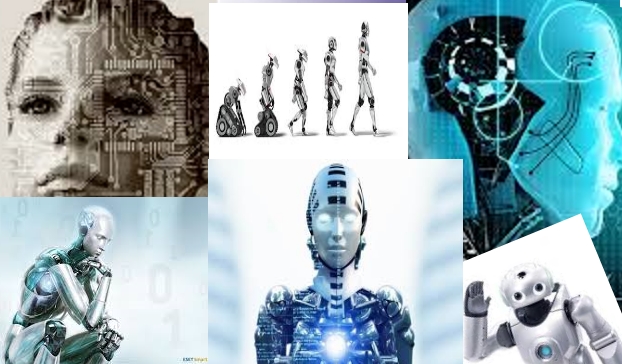By Adrian David Cheok, Saša Arsovski, Syah Fisal Bin Kamarudin, Kirthana D/O Govindarajoo, Nurizzaty Binti Salehuddin, Siti Nurannisa Binti Abu Hamid, Sze Hui Wong
You can try out all the chatbots and other projects from the AI team on this page: http://imagineeringinstitute.org/imagineering-institute-chatbots/
Project 1: Building a Neural Conversational Agent Based on the Extracted Knowledge from the Rule-Based Chatbot
The research of this project has two objectives. The first objective is to develop methods and procedures for the extraction and organization of knowledge stored in the existing rule-based chatbot. The proposed methodology for extracting knowledge from the chatbot is based on the following hypothesis. If we put a number of questions to chatbot, the number of unique responses will become constant after a certain number of questions. To prove this hypothesis, we have created a Question Agent (QAg). The basic function of QAg is the interaction with existing chatbot by asking questions and recording the responses. As a question database, QAg uses previously prepared big noisy datasets. Dataset is created from several knowledge sources: Cornel Movie dialogs, movie subtitles, Google one billion words dataset and Yahoo questions dataset. When the obtained results are represented with a functional dependence of the number of unique responses and the number of questions asked by the logarithmic function, the process of extracting chatbot knowledge is finished. Based on the knowledge extracted from the rule-based chatbot and using neural network deep learning techniques new Neural Conversational Agent (NCA) will be created. This is a second objective of this project. Generated NCA will be evaluated and compared with rule-based chatbot. Methodologies, findings and techniques evaluated in this project will be used in the Personal e-mail bot project.
Project 2: Imagineering Institute Task-Oriented Chatbot
Motivated by the technological and social changes of the smart devices and things, Imagineering Institute chatbot team build and deploy the Internet task oriented chatbot based on the AIML 2.0 technology. AIML 2.0 technology enables access to the numerous Web knowledge databases like Wolfram Alpha, Trueknowledge.com, Answers.com, Weather Service, Shopping sites, other chat-bots and Netbase. Netbase knowledge Graph contains over 600,000,000 nodes and statements, from all over the Internet’s sources, including Freebase, Wikidata, DBPedia, Yago, Wordnet, as well as many custom GraphDBs. In the next step, Imagineering Institute chatbot team successfully implements speech recognition and speech synthesis (TTS) functionality for the task-oriented chatbot. By creating Visual Dialogue Manager for AIML 2.0 chatbot team enables the possibility of creation and implementation dialogue trees for other projects in the Institute, without special bot-master skills and AIML 2.0 knowledge. By adjusting task oriented chatbot for use on the Raspberry pi devices, Imagineering Institute chatbot team has enabled the development and set guidelines towards the Internet of Talking Things concept realization. The task-oriented chtatbot provides conversational and speech functionality to numerous Imagineering Institute projects as: Teacher bot for the English vocabulary acquisition, Chemistry teacher chatbot, Talking Bench project, Interactive stories telling for visually impaired children.
Project 3: Personal E-mail Bot
Following the idea of making email-bot for answering to a personal email messages automatically, first, we determine how much messages can be processed with email-bot? After initial research, we categorized types of E-mail messages as: Personal, Social, Updates, Promotions, Forums. The goal of this project is to process only the Personal email messages. In the next step, we defined message subject and message body types. There are three types of messages: Questions, Statements and Union of the questions and statements. Many pseudo critical thinking approaches present all judgments as falling into two exclusive and exhaustive categories: fact and opinion. Those message patterns can be divided into two groups: General factual question patterns, Personal decision Patterns (Invitations patterns, Confirmation pattern, Time line patterns, better or worse message patterns and, many answer message patterns). Statement patterns can be categorized as Notifications or General statements. Union of questions and statements is a combination of previously defined patterns. After identifying message patterns, we conclude that email-bot can give automatic answer for the following message patterns: General factual question patterns, Better or worse message patterns, Many answer message patterns, General statements patterns and to the combination of the mentioned patterns. Next task in project is to create method for recognizing types of the above-mentioned message patterns. To fulfill previously defined tasks, we need to create Message Filtering Agent. The aim of this software Agent is to prepare chosen messages for the automatic answering. Next step in this project will be downloading and filtering the dataset of the received and replied email messages. This dataset will serve as a training dataset for the Deep Learning technique Seq2seq LSTM Neural Network model. After neural network model training we will create frontend application for the personal E-mail message bot.
Project 4: Cloning Human Digital Personality
According Behaviorism one definition of the personality is the set of learned responses and habits. The habits are the set of well-learned responses that have become automatic. Main challenge in this project will be to prepare big dataset that will represent persona digital behavior. To accomplish this, we will use dataset of personal e-mails from the project “Personal E-mail bot”, dataset from different chat platforms and chatbot interview technique to obtain enough data. This data will represent personal perception of the world concepts, personal and specific way of communication of the chosen person. Using a findings and techniques from the project “Building a Neural Conversational Agent and extracted knowledge from the rule-based chatbot” in the next step, we will use seq2seq LSTM Neural Network model to train NN model and cerate Neural Conversation persona clone. We will evaluate obtained results using a slightly changed Alan Turing Imitation game test. In this experiment, a human subject – interrogator will chat with real persona A (for which we create Neural Conversation persona clone) and with another human persona B. Randomly we will change persona A with his Neural Conversation Clone. The task of interrogator will be to determine who is the real persona A.

